Very heavy rain mixed with pea size hail pelted our Toyota Tundra's windshield as we drove west on US-64 about an hour west of Cherokee, Oklahoma where we planned to spend our nights before and after collecting selenite for two days at the nearby Great Salt Plains National Wildlife Refuge. The deluge was bad enough at one point we thought it prudent to pull off the road and hunker down under a tree at least until the hail stopped. We finally made it to Cherokee around 8:00 PM and, after checking into the rundown Cherokee Inn, we drove up and down the tiny town's main drag to see if we could find something to eat. We were disappointed to find the few restaurants that existed and the local grocery store were all closed. There were two convenience stores still open, but both had slim pickings for any decent food. A couple ham and egg sandwiches of questionable age and origin and a bag of potato chips were all that were on the menu for us that evening.
While choking down our mystery sandwiches, we watched a TV newscast about severe weather in Oklahoma City, about a 2-hour drive to the Southeast. The city was being pounded by a powerful storm with the worst rain and hail in decades; softball size hail was doing most of the damage. This was the same weather system that we had driven through and rolled over Cherokee earlier that evening, albeit with a much lesser hail volume and size than in Oklahoma City. With all the rain that had been received, we were unsure if the normally dry salt flats south of Great Salt Plains Lake where the selenite collecting area is located would be under water and therefore inaccessible in the morning, but we'd just have to wait in see.
We woke up well before sunrise the next day. The weather forecast was calling for a repeat of the bad weather, but the thunderstorms were not expected to hit until mid to late afternoon. Freaked out at the very real prospect of having our truck bombarded with softball size hail and knowing that if it rained anymore the collecting area would have no doubt become inaccessible, we decided to get as far away from Oklahoma and its predicted storms as we could before the sun set that evening. Since the collecting area was pretty much on our way home and the morning sky showed no sign of imminent rain, we decided to check it out and collect for a few hours if possible before heading east.
We arrived at the salt flats to find them partially covered in very shallow water. The entrance road to the selenite collecting area was wet and muddy, but easily passable. Fortunately, the designated collecting area, that is moved around from year to year, was on a relatively high spot, so only a small portion of it was covered in rain water. So, we were able to dig after all, at least for a few hours.
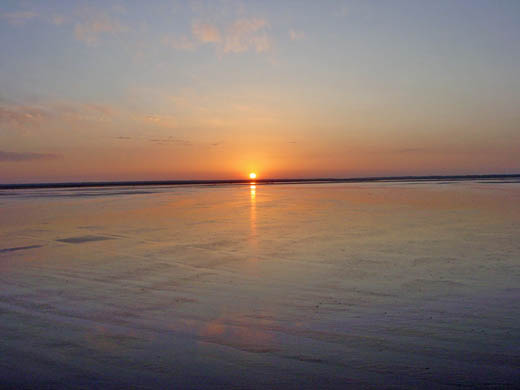
Sunrise at Great Salt Plains Lake's Salt Flats
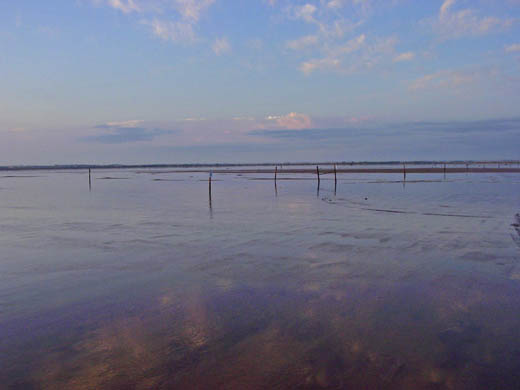
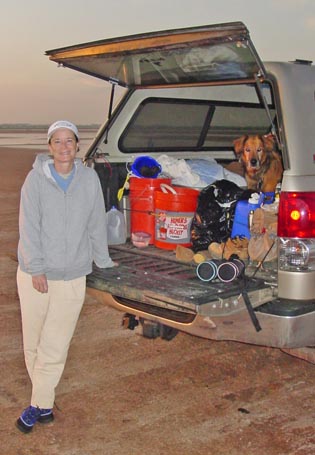
Westward view from parking area (above left) & Chrissy & Opal
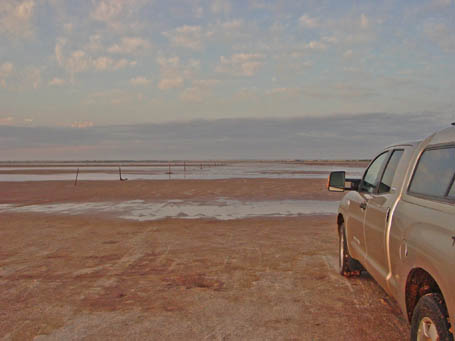
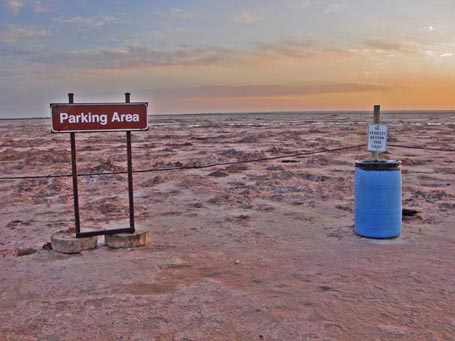
Entrance Road (above left) & and Digging Area (above right and below)
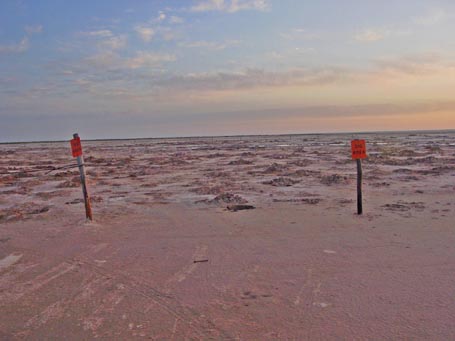
The selenite collecting area was closed for a long while after some chemical weapons vials were found in 2007. The following sign tells this story.

Click on above picture to enlarge.
The process of digging hourglass selenite crystals at the Great Salt Plains is fairly easy and straightforward. First, you dig a hole about 2 feet square by 2 feet deep. If you are lucky and in the right spot, you will hear a lot of crunching as the shovel goes through a layer containing selenite crystals. While it is true that the process of digging the initial hole will likely destroy crystals, doing so is necessary for the greater good. After the hole is completed, salty groundwater will slowly infiltrate and fill the bottom of the hole. Using a small bucket or some other container, you take the water on the bottom of the hole and splash it on the sides to reveal selenite crystals or clusters, should they exist. Obtaining water from nearby abandoned holes to use in your freshly dug one hastens the process.
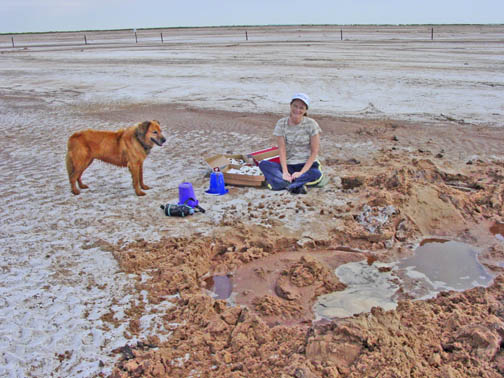
Chrissy wrapping specimens after digging
After several hours, we decided it best to hit the road for the aforementioned reasons. We spent the night at a nice motel just west of Little Rock, far way from a stormy Oklahoma.
The following pictures show some of the specimens we recovered.
Click on each specimen picture below to enlarge.
CLICK THE LITTLE MINER TO RETURN TO THE FIELD TRIP PAGE
